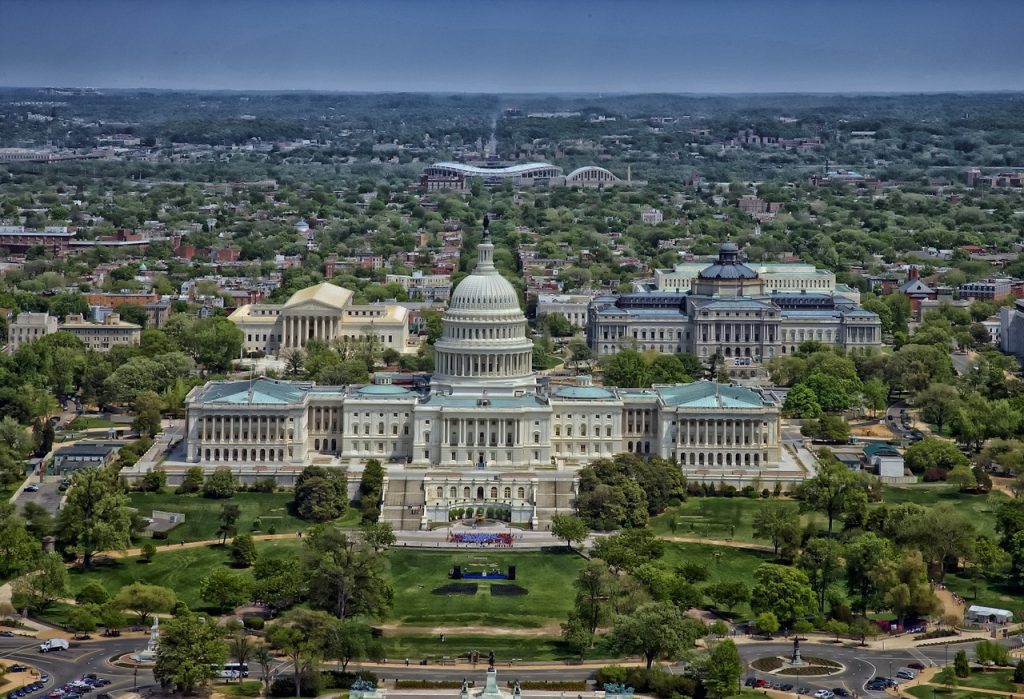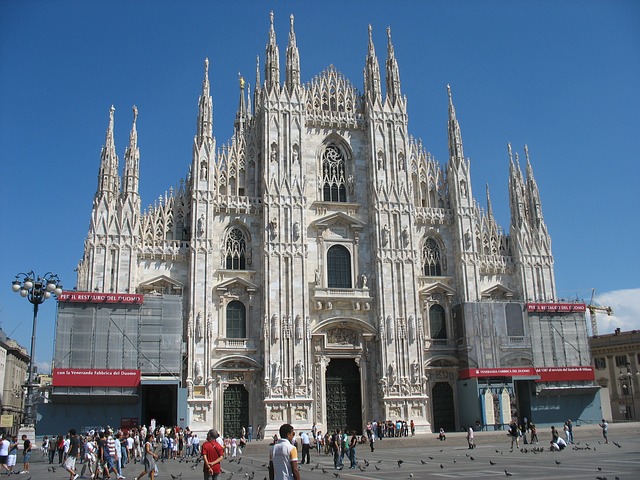As I was sorting my notes from the CIDOC conference in Milano I discovered that, unlike my notes from other conferences, it was hard to separate the sessions from one another and to separate my personal conversations with colleagues from the presentations and discussions at the conference. So, I gave up on summarizing the different sessions I attended and took a look at the big picture. Was there a leading theme, something that played a part in all sessions and discussions? Well, yes, there was, and, a little bit to my surprise it wasn’t something like “we need to contextualize our data more” or “we need better standards” or “we need to do more marketing for our profession”. The leading theme – at least for me – was: “Good documentation starts with people doing it and is only good if it is useful for people.”
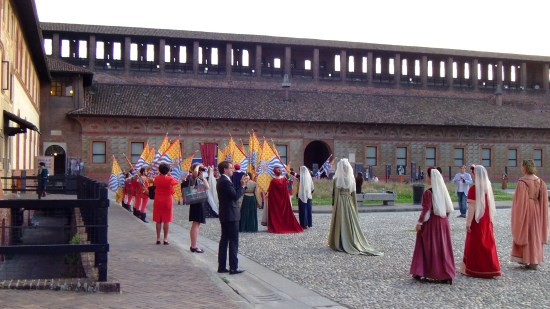
Colleagues enjoying the opening ceremony of ICOM 2016 Milano at Castello Sforzesco.
Take the presentation of Alexandre Matos about implementing standards in some museums in São Paulo: the translation of the SPECTRUM standard into Portuguese, the localization of it for the local needs and the implementation of some of the standards in three museums was made possible by people doing it – included, and maybe the most important of all, by people in the State Secretary who were convinced that having standards in museum documentation is a good and necessary thing. How many good projects towards professionalization in our sector are blocked because officials don’t deem them necessary?
It’s the same with other projects like developing a combined and enhanced textile thesaurus out of the diverse ones that already exist at the HTW in Berlin, or the “International Image Interoperability Framework (IIIF)” (http://iiif.io/) developed in Yale to support the work of researchers, or the experiences from automating processes in a museum library in Zambia. It all comes down to people who take the initiative to improve existing processes or to develop new ones – and not simply for the joy of doing it, but with their audiences and colleagues in mind.
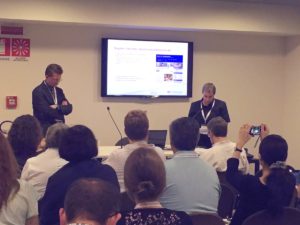
Presentation ”Spreading the word: explaining what Museum Documentation is – and why it is important“ (photo via @CIDOCevents)
As a collections manager among documentalists I halfway expected that I would feel strange. After all, while I use our database often, my job is more about taking an object out of the location it tells me than about thinking about thesauri and definitions. But I discovered that the topics discussed where highly relevant to my own work. Maybe it struck me most in the presentation “Mind the gaps: missing connections in museum documentation” given by Michael Jones. He described the issue that in research there are often missing links because you either search for something in the archives or in the object database or in the picture archive, but you don’t find the relations between the items found. So, while you might find the diary of an expedition in the archives, you might miss that there are specimen found during this expedition in the storage area and pictures of the crew in the picture archive. It struck me, because it’s one thing we do often in our own database in the TECHNOSEUM. Whenever I find a connection between two artifacts I will document this connection in our database. When we have archival material about an object or it is mentioned in a book it is often already referenced in the object catalog entry. If an object was shown in a special exhibition, you will find the label text in our database. I always took this high amount of interlinking done for granted, nothing I gave a second thought. It was only here, at the CIDOC conference, that I learned that this isn’t something that goes without saying. And again, the reason that it is available are people. People working in documentation at the TECHNOSEUM who chose a database software that was able to provide such linking between different categories of material and who created field sets and implemented processes that make it easy for everybody to make such connections.
A project that immediately grabbed my attention and fascinated me was the “Encyclopaedia of Museum Practice” (http://cidoc-dswg.org/ ) that was initialized by Jonathan Whitson-Cloud. It is a project aimed at developing a multilingual wiki on museum terminology so everybody working in the field all over the world can look up terms and understand what they mean. We had a fruitful discussion about the project and some hands-on tries on the software. I shared some of the experiences we had at Registrar Trek with working multilingual. Again, this project is highly dependent on people just taking a heart and start adding terms and providing translations, so here I want to encourage you, the reader, to create a user account and start filling the “Encyclopaedia” with content!
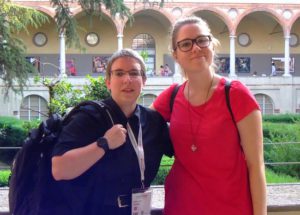
Marzia Loddo and I at the Museo Nazionale della Scienza e della Tecnologia “Leonardo da Vinci”
Maybe what I will remember most about the trip to Milan is the people I met and the conversations I had. And again, the topics of documentation played a role. When you are meeting with an art historian like Rupert Shepherd at the “Porta Nuova” in Milan you might learn that for a renaissance researcher this place is somewhere else than for the common tourist collections manager. Yes, terminology is important but we managed to find each other and fellow documentalist Susanne Nickel to enjoy a good Italian dinner together! Of course, there’s nothing better than swapping documentation horror stories with fellow documentalists and I did so with many colleagues I had never met so far or knew only via the internet – and with people I haven’t seen for quite a while. It’s funny that you might work next town for years but you need to go to Italy to see each other and have a cup of coffee or a glass of wine together. And I learned that nothing stops a Registrar Trekker! Marzia Loddo, one of our Italian translators, and I managed to meet each other although a couple of incidents including a broken washing machine tried to hinder us!
It was great fun, thank you Milan and maybe we meet each other while working on the “Encyclopaedia”?
Best wishes
Angela
This post is also available in Polish, translated by Marcin Mondzelewski, the translation originally appeared on the blog of the Polish Museum Registrar Association http://inwentaryzatorzy.blogspot.de/.






